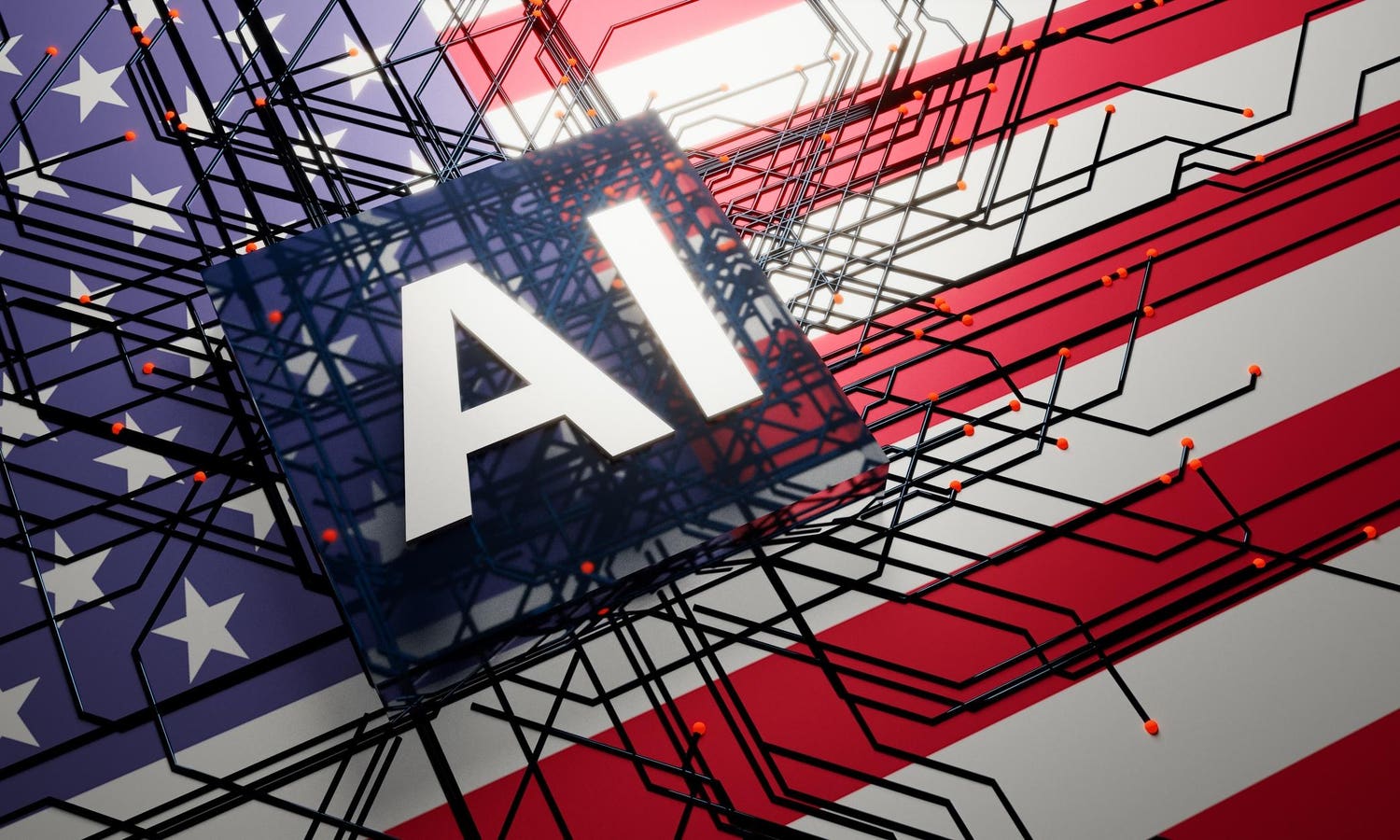USA artificial intelligence
Next week, President Trump is expected to deliver the most comprehensive statement on technology of his two terms. He will speak at the “Winning the AI Race” Summit alongside David Sacks, his AI and crypto advisor, and one of the hosts of the All-in podcast, which is co-organizing the event with the Hill & Valley Forum. The date of the event, July 23, coincides with the 180-day deadline for the creation of the nation’s AI Action Plan, set by the “Removing Barriers to American Leadership in Artificial Intelligence” executive order from last January.
He is expected to lay the foundation for the AI Action Plan, outlining the strategy to reassert U.S. leadership in artificial intelligence, emphasizing innovation, economic competitiveness, national security, and “human flourishing”. In this context, human flourishing is used as an aspirational justification for advancing American leadership, economic prosperity, national strength, and individual opportunity. Unlike in prior administrations or international AI principles frameworks that link flourishing to ethics, equity, or the protection of rights, Trump’s use aligns more with a pro-growth, pro-innovation worldview. It suggests that human well-being will be best served not by precautionary rules but by maintaining America’s global dominance in AI, creating jobs, advancing national security, and reinforcing free-market values. The action plan will focus not on regulating AI to protect people, but on unleashing it to empower American enterprise and advance U.S. geopolitical leadership.
A Pro-Innovation AI Agenda with Geopolitical Ambition
The plan is expected to mark a significant shift from the previous administration’s approach, viewed as imposing regulatory barriers to AI development. It likely will not include any references to addressing ideological bias and will reject engineered progressive social agendas from AI systems. It will promote a deregulatory framework directing the executive agencies to execute a pro-innovation agenda. In essence, the Action Plan is expected to signal a decisive turn toward accelerating AI advancement through reduced oversight and increased policy cohesion across federal agencies.
The U.S. AI Action Plan follows an unprecedented wave of public input that exposed deep divides between industry and civil society. While Big Tech and venture capital firms advocate for light-touch regulation, civil society groups call for binding accountability. The plan comes on the heels of several recent developments: the relaxation of export controls allowing NVIDIA to resume sales of of all but the most advanced semiconductor chips to China, a move backed by proponents of U.S. technological diffusion, and the Senate’s decision not to block states from making their own AI laws. Without a federal law, this could lead to a confusing mix of state rules. The AI Action Plan should give Congress a clear signal to step in and create nationwide rules that would replace this patchwork and bring more consistency across the country.
At the Pennsylvania Energy and Innovation Summit, President Trump celebrated more than $90 billion in AI and energy investments by companies like Google, Blackstone, and CoreWeave. Projects include new data centers, hydroelectric upgrades, and natural gas infrastructure. During the event at Carnegie Mellon University, the administration framed AI leadership over China as a national priority, easing environmental rules to accelerate development. Critics warned this fossil-fuel-heavy approach endangers climate goals, while officials downplayed environmental concerns in favor of energy and security priorities.
Any effort to design a technology policy tries to balance different attributes, such as market power and antitrust considerations, product safety, the responsible use of the technology, elements of industrial policy, national security, intellectual property, environmental issues and public interest. The policy can also be restrictive or enabling. As an example, traditional regulatory efforts tend to be seen as restrictive, while industrial policy typically incorporates enabling incentives to stimulate private or public sector action. Each society or jurisdiction will determine the right balance of these elements to achieve the overarching policy goals under a set of normative values. From the early days of the second Trump administration, it was clear that innovation and global leadership were the guiding principles for the new AI policy. This was evident in the January executive order preamble, which stated:
“The United States has long been at the forefront of artificial intelligence (AI) innovation, driven by the strength of our free markets, world-class research institutions, and entrepreneurial spirit. To maintain this leadership, we must develop AI systems that are free from ideological bias or engineered social agendas. With the right Government policies, we can solidify our position as the global leader in AI and secure a brighter future for all Americans.”
Infrastructure, Investment, and the Limits of AI Regulation
The AI action plan should receive very high marks as an enabling policy. Likely measures include federal investment in AI infrastructure such as compute clusters, high-speed networks, and energy-intensive data centers. To support this build-out, the plan may propose energy policies and electrical grid improvements aimed at ensuring reliable, scalable power for AI workloads. Workforce development is also expected to feature prominently, with initiatives to expand STEM education, reskilling programs, and apprenticeships. AI Research and development will likely receive increased funding, along with expanded access to public datasets. The streamlined regulatory processes will promote economic opportunities, especially for small and medium-sized businesses.
We will have to see how the plan addresses safety and security, including export controls, critical infrastructure protections, and incident reporting to safeguard national interests, and whether it offers guidance on intellectual property to help resolve legal uncertainties surrounding AI data and outputs.
Little is expected on the regulatory side, as accelerationist voices within the industry, notably from frontier AI labs and venture capitalists, are closely aligned with those shaping the plan. Recent struggles with implementing the EU AI Act and Colorado’s AI legislation illustrate the challenges of regulatory-heavy approaches. Both efforts have faced pushback over complexity, compliance burdens, and unclear enforcement mechanisms.
As President Trump prepares to unveil the AI Action Plan, all signs point to a strategy rooted in acceleration, favoring infrastructure, investment and innovation over regulation. The plan reflects a broader vision of AI as a driver of national strength and economic leadership, not just a technology to be managed. Whether this approach can deliver long-term benefits while navigating real risks remains to be seen. What’s clear is that the future of American AI policy is about to take a definitive turn. As the plan is unveiled and key announcements are made, we will provide a more detailed analysis of its provisions, implications, and the direction it sets for U.S. AI leadership.









